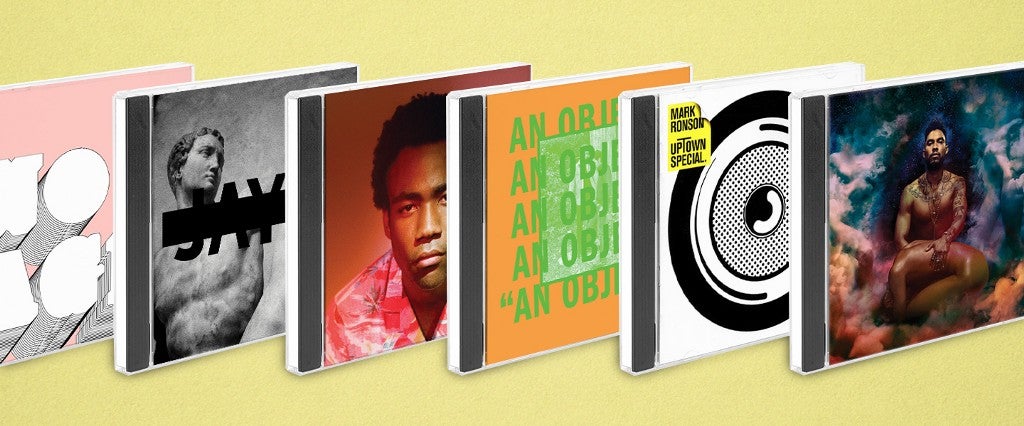At the same time that Frank Ocean’s new album, Blonde, appeared on Apple Music this past Saturday, his new art book, Boys Don’t Cry, popped up at shops in New York, Los Angeles, Chicago and London. The 366-page zine is best thought of as the old-media opposite of a sneak-attack streaming record: heavy and glossy, limited edition and unshareable. It came packaged with a CD, like humans come packaged with a tailbone — the people standing in line for hours to get a copy of Boys Don’t Cry killed time by listening to Blonde on their iPhones.
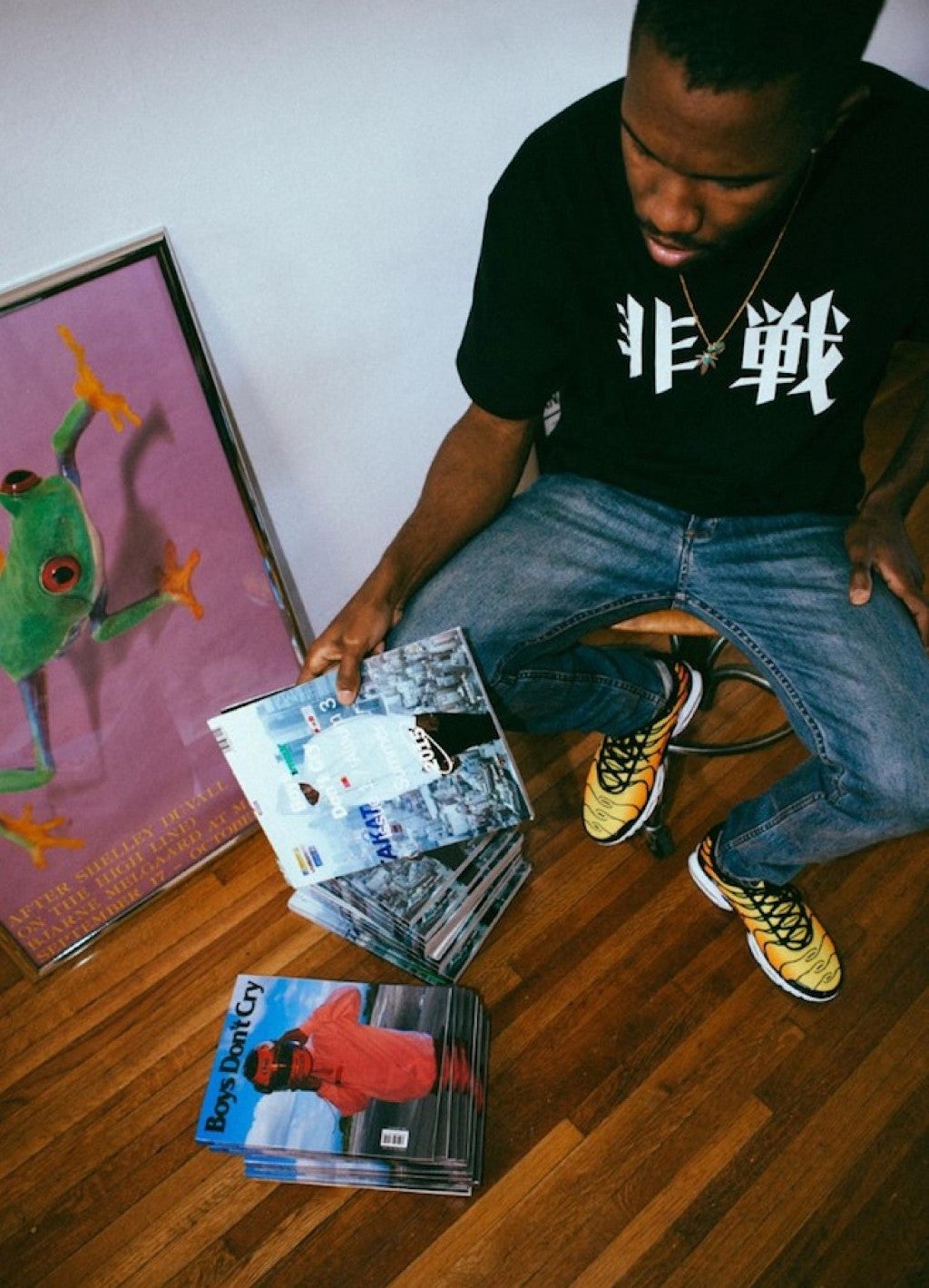
Ocean’s collection of photos, poems and essays is the latest incarnation of a new maximalist impulse in album art, one that tries to pin down increasingly immaterial music with physical artifacts as beautiful as any museum catalog. Boys Don’t Cry takes the impulse to buy vinyl, to possess a shiny representation of your taste, to its logical extreme — why waste space and money on a platter of plastic when you can print Kanye’s poem on McDonald’s French fries instead?
Brian Roettinger is one of the prominent designers behind this movement. He didn’t work on Boys Don’t Cry, but the magazines, images and booklets he’s made for Jay-Z’s Magna Carta Holy Grail and No Age’s Nouns have netted him two Grammy nominations. He’s also worked on album art and packaging for artists like Miguel, Selena Gomez, Florence and the Machine, Liars, Childish Gambino and Mark Ronson (of “Uptown Funk”).

After starting out designing fliers and merch for bands in L.A.’s early DIY punk scene, he’s built a career that straddles genres and mediums. When he isn’t working with musicians, he works on actual museum catalogs and publishes books under his press Hat & Beard.
As one of the biggest artists in the world starts giving away expensive photo zines to accompany his streaming album, we thought it was a good time to ask Roettinger how the stuff surrounding an album gets made (and what he wants to make in the future).

Have you ever wanted to do what Frank Ocean’s doing, just design a stand-alone magazine along with an album release?
Absolutely, I think it’s fucking great. I think there’s a quality within every consumer, or every fan, or just like human nature, that we like to have physical things, and I don’t think it’s ever gonna come to a point where there’s no physical object with music. Maybe it’s a magazine, maybe sometimes it’s gonna be a coffee cup, or maybe sometimes it’s gonna be like a pair of pants and a shirt and a jacket.
But it’s funny, because with No Age, we had the idea to have the music not come with music and just be a book, and we were like, “Let’s do this!” And the label said, “You’re crazy, we can’t sell that.” But that was like six years ago, and now Frank Ocean does it, and they’re gonna be like, “It’s genius.”
What did you end up doing with No Age?
We published a magazine-sized book with the vinyl, that had the lyrics, but then also a transcript of this conversation we all had while we were making the album — we kind of interviewed each other at four in the morning in our studio. It’s nonsense, it’s totally nonsense, but there’s some interesting inside jokes in there, and references to songs on the record.
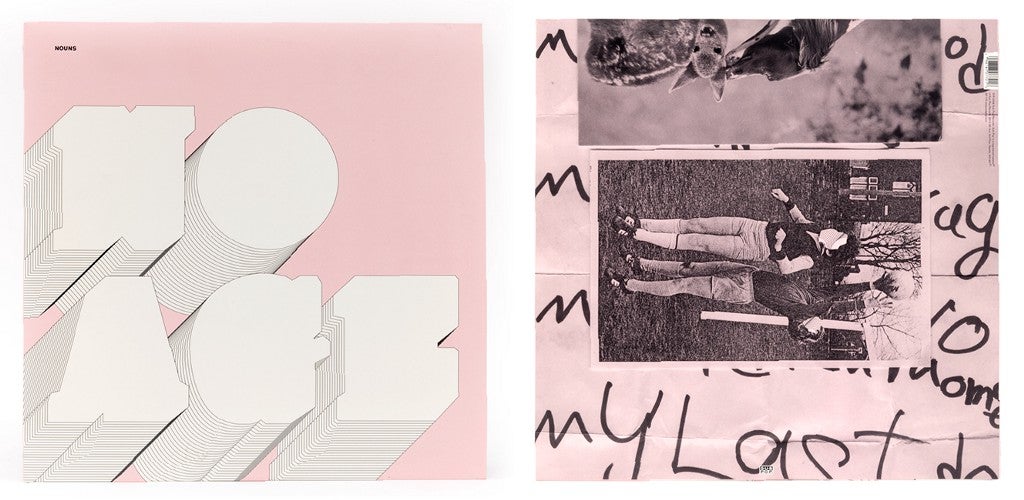
Have you made that kind of big book for other albums?
Yeah, for Childish Gambino, the record came with a script to a short film that he actually made, with the record as as the soundtrack. You could read the script, and then it tells you at certain points of the script which songs to play. And that’s totally secondary; it’s not like there are any lyrics.
How much does the actual music inform the stuff you make to go with an album?
I have no problem designing a record without even hearing it. With Jay-Z, I think I heard one song, maybe the day before it came out.
So with Magna Carta Holy Grail, then, what were you going off to come up with those images?
They gave me the titles of the songs and some of the lyrics. And [Jay-Z’s creative director and I] came up with the idea to create a photographic essay, and show the lyrics redacted, because it was around the time when Wikileaks was first in the news. But even with the cover image, we were looking at a lot of photos, but we had no idea what it was going to be until we saw it.
So Jay-Z didn’t ask for anonymized statues.
Not at all. The photographer, Ari Marcopoulos, was shooting at the Met because one of the songs is talking about art, and then sent us a bunch of images, and when I saw that one, I immediately cropped it, and we were all like, “This is the fucking cover.”
At first there was a little bit of, “I don’t know, is that right?” but I think all of us on the creative side were like, “This is it.”
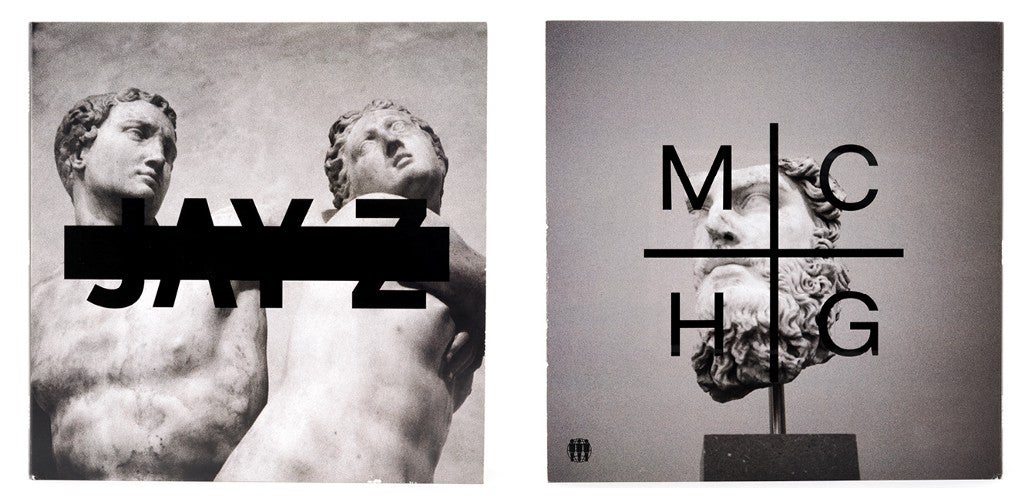
Why was there some pushback?
It doesn’t have a relationship to the prior hip-hop aesthetic: it’s very masculine, but it’s also feminine. It’s talking about art. It could be the cover for an old dark wave goth band, post-Joy Division, or an indie rock band, or a metal band. Like, you don’t know. And I think that’s what’s so great about it.
So the music itself, how it sounds, doesn’t really impact how you design?
I’m more curious to know what the record is about, because that acts as almost a script for me. Like, here is the narrative of the album; here’s some song titles, some lyrics; here’s why we made it.
Why not bring in the sound?
The way I listen to music is probably different from the way you listen to music. If I’m going to try to compose that sound into a visual, I could just say, “Here’s this squiggly line with a square, that’s what this music sounds like to me.” But that shouldn’t be the cover, you know? I can build a bigger story out of knowing what the narrative is.
Does your work with museums and artists come into play with your work with musicians?
Yeah, I’ve been designing exhibition and museum catalogs for as long as I’ve done music stuff, and a lot of the time, those are the things that interest some bands, like, “Oh, I saw that Andy Warhol book you did,” and sometime the museum is like, “Oh we love that you did this weird album packaging.”
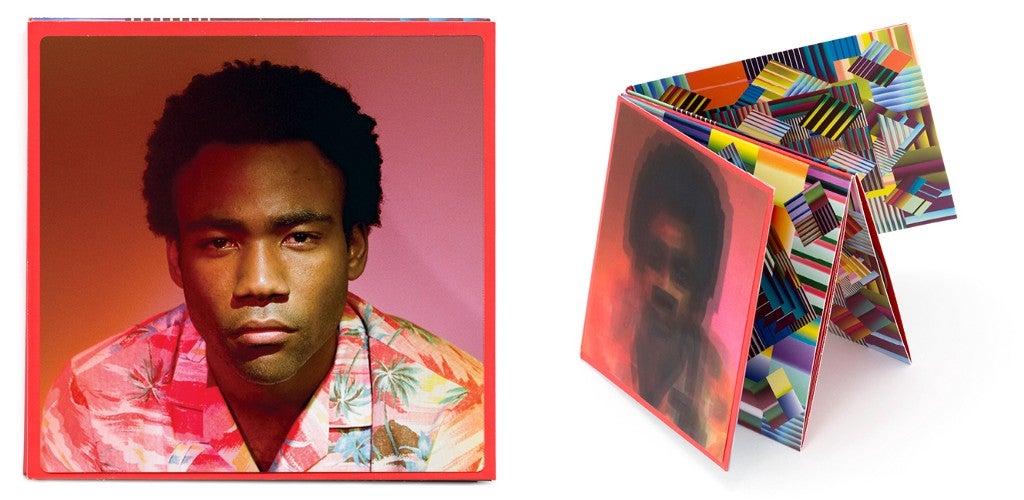
You’ve worked on a fashion zine with Kanye, Magna Carta’s cover was from the Met — why have art and fashion become such a part of the music world recently?
Art and fashion are like the new bling — it’s not like, “Look how much money I have,” or, “Look at my new car”; it’s, “Look at this painting I have on the wall.” Fashion has been discussed a lot in hip-hop since the ’80s, but it wasn’t like obscure high fashion references. I think it’s just because it represents wealth maybe, or sophisticated or more experimental ideas.
Also, Kanye calls that a zine, but I’m like, “Dude, this isn’t really a zine.” It’s a photo book.
What’s stopped you from making a standalone album-magazine so far?
It just takes the right artist or the right label to be like, okay, yeah, we can release music and sell something that isn’t music.
But I think it’s a little bit complicated from the business side, in terms of profit and distribution and making points. How does that work if someone wrote the beat for a song, and you’re just selling a magazine? With Frank Ocean, does Apple pay for it? Will Apple start distributing physical records?
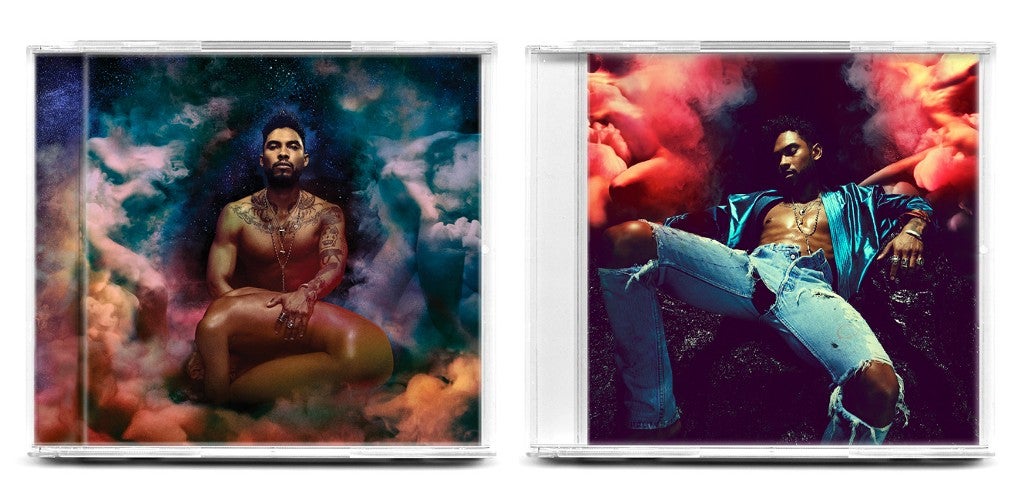
What other ideas have you always wanted to make happen, but haven’t worked out yet?
I want to make a 20- to 30-foot pit of quicksand, and either shoot a video or an album cover in it.
Seriously? It sounds like you just made that up.
Yeah no, I tried to do it for Liars and it was too expensive, and then I tried it with another person and it was too expensive.
Why do you want to shoot people in a giant pit of quicksand?
I don’t know, I just like the idea of like, slowly dissolving, sinking.
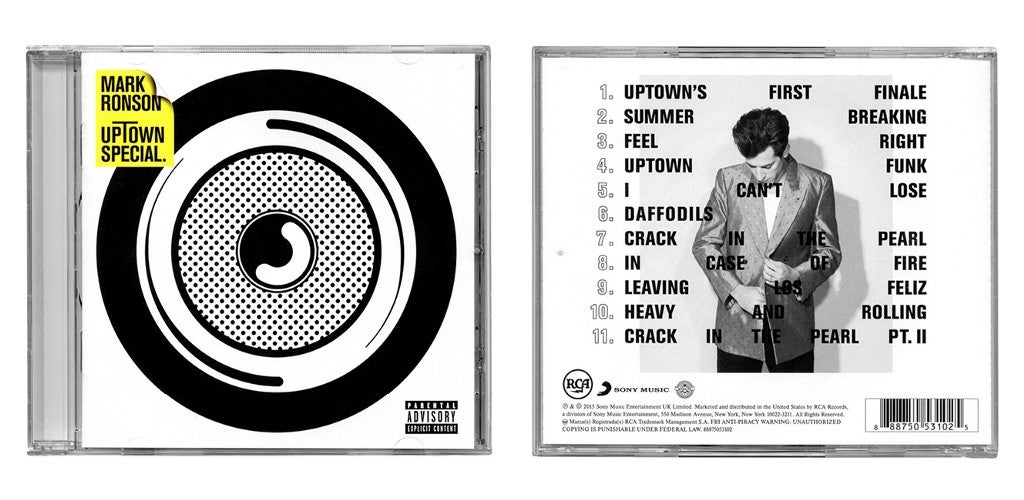
Anything else?
Oh yeah, I want to do vinyl that has two records on one side, and depending on where you put the needle it plays a different record. Or records that have a short shelf life, so the grooves are cut really shallow, so you can only listen to it a few times, and then it’s gone, silent.
I love stuff like that. But it’s hard to present ideas to bands and labels where they have to spend a lot of money for something that intentionally only works a couple times. But I think people want the object, the artifact, where you have that album, but you haven’t listened to it yet, because you’re waiting for that one time, before it goes away.
